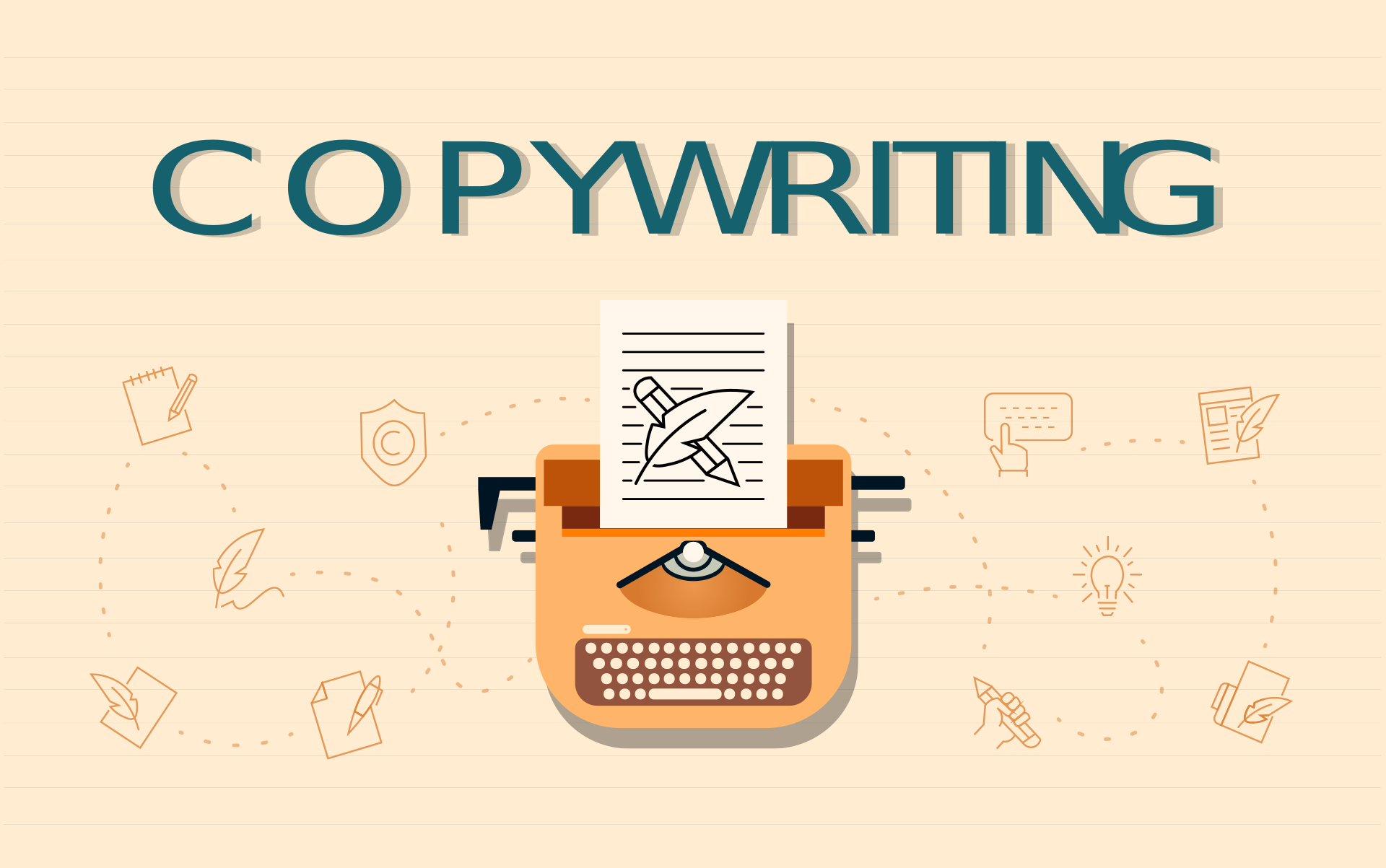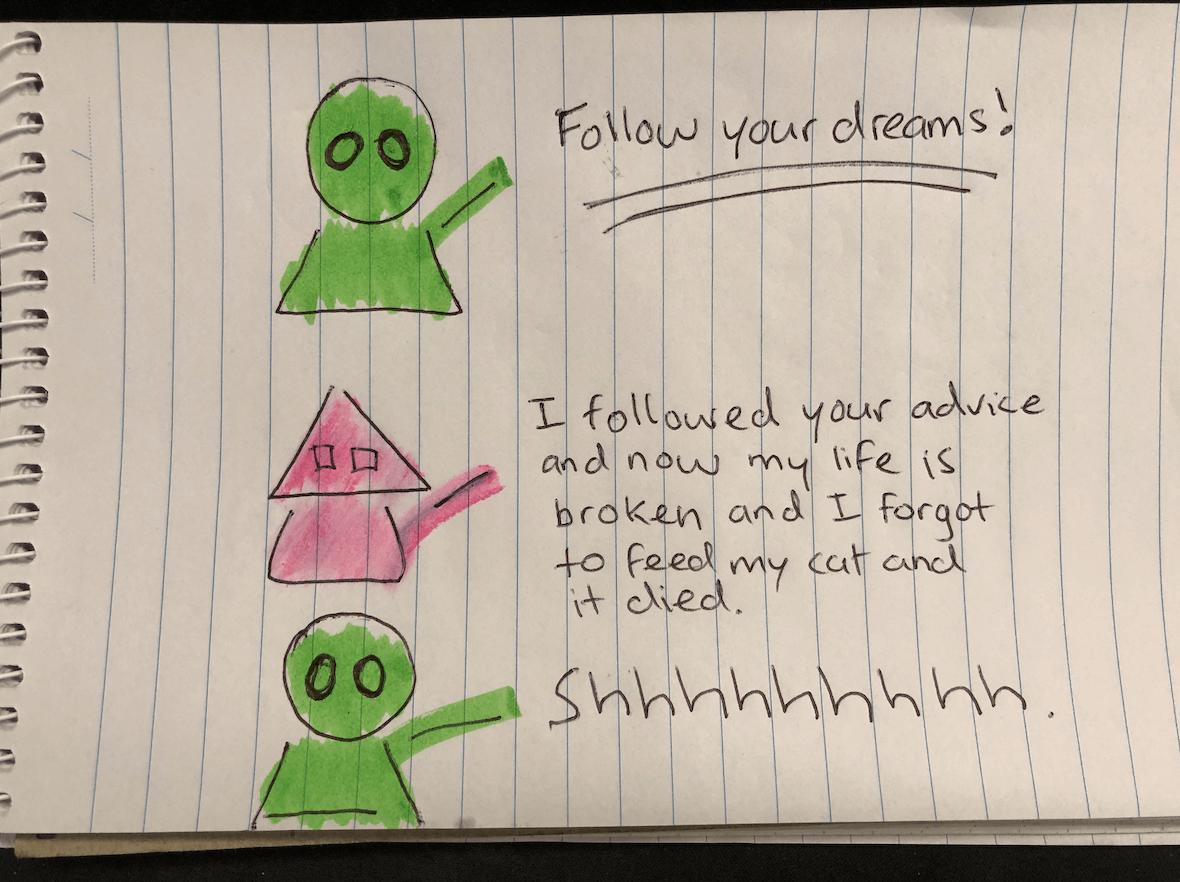“What do you do?” is a question just about everyone in business should (hopefully) know how to answer.
Equally, everyone in business — and not just the business owner — should have some basic idea of who they serve and can (hopefully) answer the question: “Who is your customer?”
Or, in more traditional marketing language: “Who is your target market?”
The question “Who is your customer?” may actually be more fundamental than “What do you do?” The former tends to dictate the actions of the latter. It’s also the case, as Peter Drucker observed, that a business is only in business in the first place because of the customer. Without a customer, there is no business (nor jobs to speak of within the business). And without a group of great customers, there is no foundation for growing a successful business enterprise.
It has become increasingly common in recent years for companies, and especially small businesses, to create a customer profile, also known as a “buyer persona,” “dream buyer,” “audience profile,” “ideal customer profile,” or “customer avatar.”
WHAT IS A BUYER PERSONA?
A buyer persona can mean different things to different companies.
In simple terms, it’s essentially a unique character bio who, broadly or specifically, represents your company’s ideal customer or target market.
The persona can be as long or short as a single sentence, a list of bullet points, a paragraph, a page, or a detailed booklet.
It is typically presented as a 1-page summary that resembles a resume and is given a memorable name such as “Bob the Builder,” “Sam the Student,” “Nurse Nelly,” “Careful Carol,” or “Sales Manager Steve.”
Sometimes, the name may go with a generic stock image or, to make it more relatable, be attached to a specific movie character or cartoon image.
ONE PERSONA OR SEVERAL?
Depending on the complexity of your business, the size and distribution of your market, and the different reasons why your customers buy, you might have one main persona or several personas to address multiple key market segments.
For example, an automotive dealer that offers new and used cars to the public, as well as private fleet leasing for business, might develop a set of personas for its general retail customer base and another set for its commercial clientele.
Nonprofit organisations might develop personas for recipients, donors, and volunteers. Then, within each of these major persona categories, the main persona might be further developed into a set of sub-persona categories.
The number of profiles and level of detail of each persona will depend on one’s unique business context and the degree of market segmentation the company believes is worthwhile and useful.
Although it is theoretically possible to develop hundreds of buyer personas, most businesses should be able to capture their key markets in 1 – 5 major profiles.
PERSONA DEVELOPMENT
In general, the process of developing a persona tends to be concerned with getting a clear picture of who one’s key customer is, the lifestyle they live, what matters to them, their interests and goals, the challenges they face, and where to find them.
Most personas tend to contain some mix of both demographic information (such as age, gender, and income status) as well as psychographic information (such as personal motivations, values, and interests).
There are many ways to approach persona development. It may be largely based on the likeness of one specific regular customer who is well known to staff. It might be based on the profile of a rarer type of “dream” prospect the company wants to go after (exclusively or in addition to its established customer base). It might be a very broad composite character that is a general summary of thousands of people who share some relevant similarities in a particular market segment. (And any number of options in-between.)
The persona is typically based on a combination of research, interviews, surveys, data analysis, first-hand experience, and educated guesses.
Depending on how much effort goes into the data collection phase, the process for developing a persona can take hours, days, weeks, or months.
Personas can (and should) differ from one company to another. Information that might be considered relevant to one company might not be useful for another.
There’s no one kind of “official” template for creating the perfect customer persona and the information here should be taken as a general guide rather than a definitive process.
DO PERSONAS DIFFER FOR NON-PROFITS?
As nonprofit organisations tend to be less focused on “selling,” they might prefer the term “audience persona” instead of “buyer persona.” However, regardless of the type of industry, company, or size, the underlying principles of persona development should remain largely unchanged.
THE ANTI-PERSONA
Sometimes, in addition to developing a primary buyer persona, a company will also create a negative persona or anti-buyer persona. This is essentially a buyer type to avoid or not to invest too much time and effort into. For instance, there may be certain common questions or specific behaviours that particular shoppers exhibit that look like valid buying signals but then turn out to be “false positives.” The anti-persona is thus potentially a good way to prompt sales staff to ask more targeted qualifying questions when this type of situation arises and to help marketing staff understand who to exclude from ad campaign demographics so that valuable ad spend isn’t wasted.
A BUSINESS STRATEGY, NOT JUST A MARKETING TOOL
Although the buyer persona is primarily discussed in the context of marketing, it’s also a foundational business tool to guide a company’s efforts across all its departments. It aligns business strategy with marketing, sales, customer service, operations, and product development. A buyer persona helps business owners and employees understand who they are serving and organise actions around this shared ideal, whether it’s building a new product line, thinking about a merger opportunity, advertising on social media, considering the tone of writing for an email sequence, or sending a thank-you card to a first-time buyer.
To make strategic sense, the buyer persona should be tied to the overall vision, mission, and values of the company.
For example, a company that has a goal to sell a premium priced version of a high-sugar energy drink while defining one of its key buyer personas as an upmarket health conscious consumer is going to have a disconnect between strategy and market. When a discrepancy like this is noticed, the buyer persona may need to be updated or overhauled. Ultimately, the buyer persona is a continuation, testing, and further refinement of one’s overall business model, and shouldn’t just be approached as an isolated marketing exercise.
A clearly defined buyer persona helps a business return to the question: “Does this [business activity] align with our customer?”
KEY BENEFITS: WHY DEVELOP A PERSONA?
Marketers now have more access to data about consumers than ever before, and more opportunity to tailor messages to niche audiences — audiences which were once very difficult (and expensive) to reach through traditional forms of marketing.
Online advertising platforms such as Google Ads and Facebook Ads allow for an enormous range of advanced targeting options. It’s in this kind of data-rich environment where a buyer persona is especially useful.
From a marketing perspective, and particularly a digital marketing perspective, the development of the buyer persona comes back to two main goals:
(1) identify which marketing channels to use.
(2) speak the right language to your audience.
For example, if you’re building a premium fitness club catering to middle-aged women with high disposable income, this will have significant implications for the types of marketing channels you decide to use and which channels are going to be less effective in reaching the right people.
It will also affect the type of marketing message you send and the general tone of your ad campaigns, since you don’t want to attract just any type of gym member. Attracting the right kind of customers in this scenario is very important to get right as it will be the foundation of your brand experience. Therefore, the better you understand your target audience, the more likely you are to find them and the better you can personalise and persuade them to join your club.
Broadly speaking, these are some of the main benefits associated with persona development:
- Bring to life your target market as a real person, instead of just being an abstract set of statistical averages and data points
- Concentrate marketing efforts and create more targeted marketing campaigns, rather than shooting in the dark
- Understand which channels to use and optimise ad spend on the most effective channels
- Understand which markets/buyer types to avoid
- Better tailor your marketing message so that it resonates more effectively with the target audience
- Boost brand loyalty and advocacy by better understanding, connecting with, and addressing the pain-points of your audience
- Conducting research on your market, rather than making assumptions, creates more accurate insights and can reveal potential blindspots
- Become more customer-centric, rather than brand-centric
- Focus on relevant benefits, not just features
- Be consistent in your strategic focus and messaging across departments
- Identify your best customers and uncover strategies to find more
- Build the foundation of a successful business on the identification and development of its critical customer base
A KEY DISTINCTION: YOUR BASIC CUSTOMER vs. YOUR BEST CUSTOMER
For many businesses, the ideal customer is viewed as anyone who’s likely to buy.
Generally, however, the ideal buyer isn’t just someone who might purchase once until you see them again in 12 months time — it’s someone who would be classed as a “regular” or “power user.”
For most businesses, the ideal customer is one who produces high revenue, high loyalty, high brand advocacy for low maintenance, while remaining aligned with your company values. In other words, someone who spends the maximum amount of money, who causes you no problems, and brings in more customers by spreading the good word about your company and who talks about your business to others in the right way.
When thinking about this process of creating your customer profile, there’s a fundamental distinction between two customer types that often gets overlooked or misunderstood:
- Basic customer
- Best customer
Your Basic Customer is anyone who might be interested in your product or service in a very broad sense. It’s essentially your average customer or common customer – the type of person you might find in your store at random or browsing on your website any given day of the week.
Your Best Customer is not just any generic shopper. This is the person who would make the biggest difference to your business if you could find more of them. You might define this customer purely in terms of financial contribution, but not necessarily. They might simply be much easier to deal with than most other customers. Or they might spread the word about your business and are willing to do testimonials. These are those special types of customers who are not just loyal to your business, but actively promoting it to everyone they meet.
RESEARCHING YOUR PERSONA
You may already have some idea of who your best customers are, however, a thorough approach to buyer personas should be based on research.
The process for building your persona begins with analysing data on existing customers and identifying the best ones.
As mentioned above, although each company will have their own criteria for defining “best,” two major criteria that will tend to apply are (1) revenue and (2) maintenance. In other words, which customers spend the most money and cause the least hassle? These are not necessarily the most important success factors for your business, but these two factors tend to apply to most business contexts. Other factors may include the range of services used, potential for future growth, brand advocacy, and values alignment. Your rating system may be based on any mix of these factors.
As you look through your contacts database, look at what existing notes, tags, and form fields might reveal useful insights or show trends. From what has been recorded, what similarities and differences are there between your top users?
As part of the initial research phase, it’s generally considered best to survey or interview your staff (particularly those in customer facing roles such as sales and account management) to gather their input and opinions as to who the best customers are and what makes a great customer experience. The most important roles to consider interviewing and giving weight to are those in relevant departments who are closest in proximity to your best customers.
For early stage start-ups or businesses inexperienced with conducting market research on personas, it’s usually best to keep things simple and focus just on the most profitable market segment or couple of segments. As the business then collects more data, you can always come back to the persona development and further define these key segments and create sub-persona profiles where applicable. When starting out and there appear to be many research gaps and uncertainties, it’s usually best to focus on the biggest customers rather than tackle too much at once.
After developing a shortlist of your best customers based on existing financial data, database review, interviews with staff, group discussion, and/or personal reflection, the next stage is to start building out a more detailed picture of this customer group and how they interact with your business.
This next phase may also include surveys or interviews — but instead of interviewing your staff this time around, your goal is to interview your best existing customers directly to gain a clearer understanding of who they are and why they buy from you.
It’s hard to approximate how many interviews would be appropriate because this depends heavily on the type of business operation and the degree of customer segmentation involved. A figure of at least 3 – 7 good quality interviews might be taken as a starting estimate, assuming there are enough “best” customers available to meet this goal.
For some businesses, a better option than interviews may be an online survey. If delivering an online survey, it’s often possible to get hundreds of responses but the quality of information may not be as high as conducting an interview and customers may also be less willing to volunteer personal information. Since surveys also lack the ability to ask clarifying questions, another option would be to run a basic customer survey and follow up with interview requests for a select group of these respondents whose answers suggest there may be more insight to be uncovered.
Because interviews are often seen as time consuming, it can be tempting for many business owners to skip. Skipping this process is risky as it means the buyer persona will be based on what the business owner thinks or assumes about the customer, rather than direct insight. For those in this position who might be reluctant to invest their time or might also be unsure of what questions to ask in this interview, we’ve included some tips below to help guide you.
The interview doesn’t have to be done in-person and can be done as part of a regular customer “check in” call. It is generally recommended to keep the interview short (around 10-30 minutes), provide some kind of incentive for taking part (such as store credit or a gift card), and to make it clear that the purpose of the call is customer research rather than sales.
To help guide this interview, some of the types of questions you might want to ask are provided below.
Possible interview questions:
- Can you tell me more about your [business/lifestyle/role]?
- Do you have key targets, quotas, or goals?
- What tasks are you doing on a regular basis?
- What are your main challenges right now?
- How does our product/service help? (What challenge does it address?)
- What’s the main reason you use our product/service?
- Are there any other factors that influenced your purchase decision?
- How effectively does it solve your problem/challenge?
- When do you usually first use the product/service?
- Can you describe the context in how you use the product/service?
- What features do you like/dislike most?
- Was there anything that surprised you about the product/service?
- How familiar would you say you are with the product/service?
- What level of training/support would you say you need?
- Have you tried other similar products in the past?
- How satisfied were you with these past experiences?
- What, in general, stops you from committing to a brand/product purchase?
- What would you improve about the product/service?
- Was there anything missing from your experience with us?
- In what specific ways do you use our product/service?
- Are there related products you use in conjunction with ours?
- How did you come to discover us?
- What’s important to you in terms of a good service experience?
- What are your preferred technology platforms?
- How frequently do you prefer to be communicated with?
- Does our brand message resonate with yours?
- On a scale of 1-10, how likely would you be to recommend our product/service?
Once you have completed the research phase and built up a clearer understanding of your best customers, it’s time to start creating your persona profile to summarise and communicate this information to your staff and key stakeholders.
POSSIBLE PERSONA ELEMENTS
After reviewing your research, it’s time to develop at least one primary persona and test its receptivity with the rest of the organisation.
The level of detail given to the persona depends on the company. Too little information about who the company is looking for might mean marketing that lacks a clear strategic direction, just as too much specific information might create confusion.
The questions below can be used as a guide. You don’t need to answer every question exactly as it’s posed and you can add questions of your own. The degree of detail you put into this analysis is up to you. You might end up with several pages of notes in the initial drafting. The final persona, however, should generally not be longer than one page and should highlight the most essential information.
Demographic information
- Age: Is the age range wide or narrow?
- Gender: Is the gender skewed to one side?
- Income: Low, middle, or high income earners?
- Location: City, suburban, or rural?
- Relationship Status: Married, single, in a relationship?
- Kids: If so, how many?
- Education: High school diploma, degree, masters, doctorate?
- Professional background: Blue collar or white collar? What kind of jobs?
- Language(s): Do they speak more than one language?
Roles
- What are their primary roles (personally or professionally)?
- Are they the final decision maker?
- Do you deal with them directly or indirectly?
Personality
- What kind of person are they?
- Are they socially outgoing or more reserved?
- Do they plan things or are they more spontaneous?
- Are they more impulsive or controlled?
- Are they more silly or serious?
- What sense of humour do they have?
Values, interests, hobbies
- What things do they like/dislike?
- What do they like to do in their spare time?
- What trends do they follow?
- What media do they consume?
- Are they part of any clubs?
- What TV shows, podcasts, magazines, and/or websites do they frequent?
Goals
- What are their (general) goals in life?
- What are their goals in relation to your product/service?
- Family goals?
- Health goals?
- Fitness goals?
- Career goals?
- Money goals?
- Relationship goals?
- Contribution goals?
Challenges and pain points
- What problems would they like to solve (at work or at home)?
- What do they worry about?
- What keeps them up at night?
- What bothers them a little?
- What bothers them a lot?
Hangouts
- Where are they likely to spend their time in-person?
- Where are they likely to spend their time online?
- What technology/software/social media platforms do they use?
- What websites do they spend most of their time on?
- How do they stay informed / get their news?
Buying habits
- Why do they buy from you?
- How do they use your product/service?
- Why do they prefer you over your competitors?
- Outside of your brand, what are their favourite products/services?
- Do they tend to care more about speed, quality, or price?
- What’s most important to them about your product/service?
Buying objections
- What common types of issues might you need to address?
- What are their deal breakers?
- What would stop them from buying from you?
- What opportunities do these objections reveal?
SAMPLE BUYER PERSONA (MRS. JONES THE JOGGER)
Sample buyer persona for a fictional premium women’s fitness club.
NAME: Mrs. Jones the Jogger
AGE: 32-55 years
GENDER: Female
ABOUT: Married with 2 children, Mrs. Jones the Jogger is an experienced HR manager at a medium-sized professional services firm on a $95,000 annual salary, living in the inner city, has a mortgage, owns a car, and generally leads a busy lifestyle juggling family and career.
PERSONALITY: Family and achievement oriented, has high standards, sociable and friendly but not an extremely large social circle, takes pride in her appearance, selective about what she wears, likes to be in control and to get things done, generally well-organised and not messy, slightly OCD about keeping things clean and tidy. Non-smoker.
GENERAL LIFE GOALS: Being a good mum and wife, having a successful career, proving herself to others, getting the most out of life, saving money for retirement, putting kids through college, paying off the mortgage.
FITNESS GOALS: Remaining committed to her workout schedule of 40-60 minutes, 3-5 days per week, maintaining health, staying in good shape, keeping the weight off, looking good, aging gracefully, having confidence, developing knowledge of different exercise techniques.
LIKES/VALUES: Relationships, treating people well, quality of life, clean living, feeling good about herself, getting the most out of life, willing to pay more for a better service experience, likes getting good results, open to digital technology such as fitness apps and step tracking, but not the kind of advanced fitness monitoring equipment that athletes might use.
DOESN’T LIKE: Poor quality, being rushed, loud music, aggressive attitudes, muscle heads, rusty metal weight racks, limited space, ugly gym interiors with no windows and dim lighting, waiting to use equipment, not having choices, unclean and unsanitised spaces, unprofessional staff, smokers.
INTERESTS: Travel, food, jewellry, fashion, wine, reading, learning, meditation, dog walking, spending time with family and friends, online shopping, boutique stores, hiking, gardening, pilates, yoga, jogging.
CHALLENGES: Stress from work, a demanding boss, time management, busy lifestyle, staying committed to health, sometimes struggles with confidence, conscious about aging and looking older, high impact exercises that are too fast and hurt the body.
WHY SHE COMES TO US: Variety of group fitness classes to choose from at different levels of intensity, enjoys the social aspect and working out with friends, the supportive environment, having space to move around, clean facilities, good lighting, extra amenities, friendly and knowledgeable staff, good quality equipment, gym is located along home route, convenient and secure parking.
PREFERRED BRANDS: Nike, Sony, David Jones, Toyota, Dove, Virgin, American Express.
PREFERRED CHANNELS: LinkedIn, Facebook, referral, traditional ads.
BUYER PERSONA SUMMARY
As a business is built on the success of finding, keeping, and engaging customers, the buyer persona is a foundational component of your business strategy.
The persona is a short description or summary document based on research and analysis of your best type of customer — the customer that is most critical to your business success — which is typically the type of customer who produces high profit, low hassle, and high brand alignment.
The buying characteristics in your persona should be linked to your overall business strategy and don’t necessarily have to be very detailed. A one-page summary of your character is usually sufficient to convey the necessary information.
The persona helps bring complex numbers to life by painting a realistic portrait of this critical customer based on real-life stories, experiences, interviews, and reflections.
Since the persona will primarily serve as an internal marketing document, it’s important to think about how it is going to be used by staff and in what kinds of marketing situations. Working your way back from its practical application can help to determine what elements to include and what questions to consider when conducting market research from the very outset.
By understanding the psychological makeup and key types of buying characteristics of your buyer persona, every staff member (especially sales and marketing staff) is able to more effectively target this group, know what to say, and know what kind of things to avoid to minimise the waste of time, money, and resources.
Persona development should take into account the company’s unique business context and fundamentally make sense in terms of your long-term goals and values.
It shouldn’t be a short-term exercise only to create a document that never gets used. Similarly, it shouldn’t be an exercise that is conducted purely because it’s a popular marketing buzzword. It should function as an extension of the core business strategy which centres around understanding and serving a particular group of key customers.
The example questions, possible elements, and sample template provided above function as very general guidelines to help you build your own persona or set of persona profiles.
Once you have created your first persona, share it within your organisation and track how it gets used. Update elements that are inaccurate, unclear, or ineffective.
Don’t expect to get it perfect the first time around.
The persona is an ongoing process that will need to be refined and will take shape as your business evolves and you’re able to gain more valuable customer data as time goes on.
We hope this guide helps to smooth the ride.






